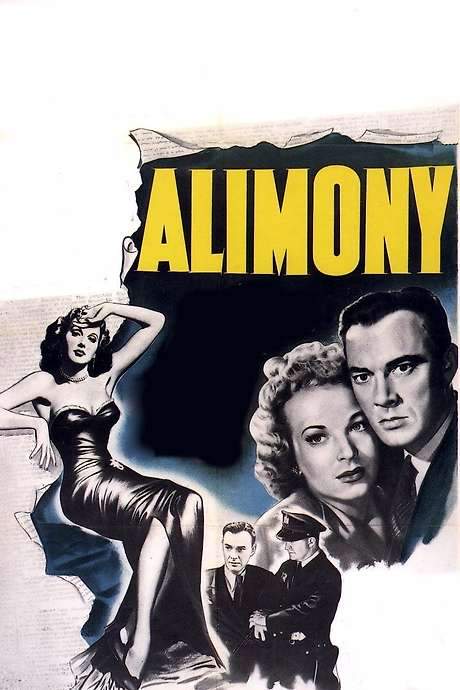
Alimony
Year: 1949
Runtime: 70 mins
Language: English
Director: Alfred Zeisler
Alimony racketeers prey on innocent dupe victims, exploiting the legal system for profit. When a promising young composer is lured away from his devoted wife by a scheming, fortune‑seeking woman who values his future earnings more than his love, he finds himself caught in a web of manipulation and betrayal.
Warning: spoilers below!
Haven’t seen Alimony yet? This summary contains major spoilers. Bookmark the page, watch the movie, and come back for the full breakdown. If you're ready, scroll on and relive the story!
Alimony (1949) – Full Plot Summary & Ending Explained
Read the complete plot breakdown of Alimony (1949), including all key story events, major twists, and the ending explained in detail. Discover what really happened—and what it all means.
Paul Klinger James Guilfoyle is on a desperate search for his lost daughter, Kate Martha Vickers, and travels to New York to seek out Dan Barker John Beal, a songwriter who knew Kate in the city. Dan’s tale unfolds as he recalls the woman who became central to so many lives, a figure who would later be known as Kitty Travers, and how her choices drew in a web of ambition, love, and reckoning.
Dan explains that Kate changed her name to Kitty Travers and then shares what he remembers about Kitty. He first met her when she was seeking work as a model and ended up at the same boarding house as his girlfriend Linda Waring Hillary Brooke. A friend steered Kitty toward a dangerous line of work—co-respondent in alimony cases where the man could be framed for a larger settlement. Kitty began working for the lawyer Burton Crail Douglass Dumbrille, and soon she found herself drawn into a major scandal, posing in a photograph with a married man.
Kitty showed a natural knack for manipulation and money, gathering a significant payout from her involvement. Just as Dan was about to break through as a songwriter, she entered his life with an intoxicating mix of charm and ambition. Dan fell in love with Kitty and wrote her a song, which helped him end his relationship with Linda. The romance blindsided Kitty as she realized Dan’s prospects depended on luck and timing, so she left him and he returned to Linda. The couple married, and then Dan’s moment of true success finally arrived when the song he’d written for Kitty became a national hit.
Kitty’s appetite for power didn’t fade. She returned, demanding a share of the fame and insisting she sing the song on Dan’s nationwide tour. Once again, Dan fell under Kitty’s spell and left his wife. Yet the marriage did not endure the ebb and flow of the music business, and Dan eventually went back to Linda, who took him back again.
Kitty’s next move was to marry a wealthy man, George Griswold [Ralph Graves], while secretly continuing to work for Crail. Crail arranged for Griswold to be photographed with another woman in an apparent bid to manufacture a settlement, but the scheme backfired when it’s revealed Griswold had set a trap of his own by sending a double, Curtis Carter. Both Crail and Kitty find themselves entangled in a larger fraud, arrested along with several accomplices.
Dan finishes his story, and as the tale ends, Paul receives a troubling update: his daughter Kate, now out on parole from prison, has been involved in a car crash and lies in a hospital. Paul rushes to the hospital to be with her, and the two finally reconcile. In the quiet aftermath, Paul commits to helping Kate build a new, better life, offering steady support as she starts anew. The case leaves a lasting impression of how ambition, love, and forgiveness intersect, shaping the futures of everyone involved.
Last Updated: October 09, 2025 at 11:29
Unlock the Full Story of Alimony
Don't stop at just watching — explore Alimony in full detail. From the complete plot summary and scene-by-scene timeline to character breakdowns, thematic analysis, and a deep dive into the ending — every page helps you truly understand what Alimony is all about. Plus, discover what's next after the movie.
Alimony Timeline
Track the full timeline of Alimony with every major event arranged chronologically. Perfect for decoding non-linear storytelling, flashbacks, or parallel narratives with a clear scene-by-scene breakdown.



